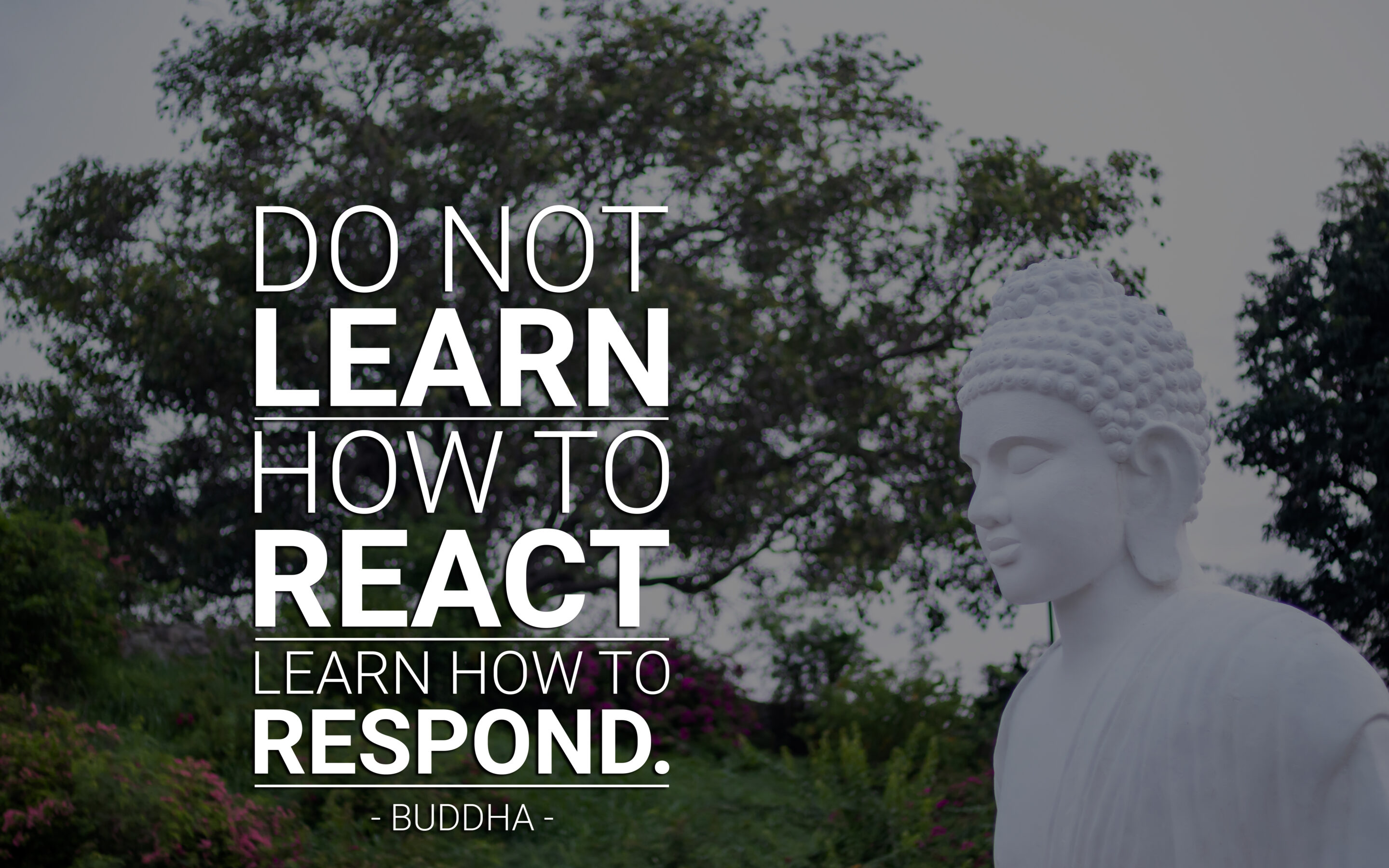Learning to respond rather than react ~
Think there isn't a difference between responding and reacting? Think again! There's a huge difference and guess what else, it affects your health and well-being. To better understand the difference, it's important to understand 2 of the main pathways in our nervous system; the sympathetic and the parasympathetic.
Sympathetic Nervous System:
We've all felt overwhelmed, frazzled, and then easily irritated. In an ideal world, we would rarely find ourselves in this state. However, with many living an ultra-busy, go-go-go lifestyle, feeling like this is often the norm. When we're in this state, our sympathetic nervous system is activated and this puts us into fight, flight, or freeze. The sympathetic nervous system also activates our stress hormones, keeping a constant stream of adrenaline and cortisol flowing through us.
The sympathetic nervous system is part of how we're made as human beings. We've evolved with it because it helps to keep us safe by allowing us to react quickly when we sense, or when we're in, danger. It's natural and necessary for us to be in this state when we need to be. Unfortunately, most are living in it all day everyday. Being in a constant state of fight, flight, or freeze harms our health, well-being, and longevity.
Signs Your Body is in the Sympathetic:
- feeling fearful
- acting more aggressively
- difficulty focusing
- increased heart rate
- flushed cheeks and/or dilated pupils
- stomach upset or feeling 'in knots'
- feeling anxious, frustrated, mad, irritated, frazzled, or inadequate
All of these are classic signs that your mind and body are in the sympathetic. In this state everything becomes heightened. Our answers and actions are quick and not well thought out. This is because when we're in this state, all we can do is react to what's going on around us. Very often the things that you've said or done that you regret, have been said or done while you were in the sympathetic.
Parasympathetic Nervous System:
The parasympathetic nervous system is also known as the 'resting state' or 'rest and digest state', and it's when our body feels most at ease. It's ideal if we can remain in the parasympathetic as much as possible throughout the day, only activating the sympathetic when necessary. Being in the parasympathetic helps move us out of surviving and into thriving.
The parasympathetic nervous system helps to restore and calm down the body after being in the sympathetic. It helps to lower our blood pressure and heart rate. It's also responsible for regulating digestion and helping our body to conserve energy. The more we're in this state, the less stress we feel. And when we live with less stress, our health and well-being flourishes. The parasympathetic is where our mind and body love to be. When we're in this state we're naturally kinder to ourselves and to others. When we're in this state, we respond to all that's going on around us because there's no need to react quickly.
Signs Your Body is in the Parasympathetic:
- feeling calm and at ease
- easily focused
- having a clear mind
- resting heart rate
- patient
- more loving towards self and others
Though not always quick and easy to move into the parasympathetic while being the sympathetic, it is possible. Every time you practice doing this, you help strengthen a new synapse in your brain. Just like building new muscles in your body, strengthening a new synapse in your brain requires consistency. Remember, we're all hard-wired to go into the sympathetic. Remaining in the parasympathetic as much as we can, requires practice.
How to Move into the Parasympathetic:
The next time you notice yourself feeling stressed, frazzled, irritated, or overwhelmed, remind yourself that your body is in the sympathetic. Becoming aware of this is the first step to being able to move out of it.
Next, consciously bring relaxation into your body by releasing tension in your jaw and shoulders.
Close your eyes and allow a few deep belly breaths with an intentional, long exhale. When you're in the sympathetic your body is breathing short, shallow breaths from your chest. So, think opposite that.
As you're giving your body these deep breaths with long exhales, think about something that calms you. Try choosing 2 or 3 images as your go-to's to focus on in your mind. Such as walking through a forest, being on a beach, or perhaps your beloved pet.
Continue to breathe deeply while remaining focused on your calming images until you begin to feel your mind chatter and heart beat slow down.
TIP: You may also choose to keep Lavender Essential Oil on hand. Inhaling it with each deep breath will help to calm you.
Furthermore, keep in mind that you don't have to respond to someone immediately. It's within your right to allow a small pause before you do. Giving yourself a moment to take a sip of water or allow a breath can help you to better respond, rather than react.
Make an effort to never reply when you're in the sympathetic. Wait to send that text or email if you notice that you're feeling any of these: fear; anger; frustration; overwhelm; impatience; or shame. Allow yourself some time to shift into the parasympathetic. And don't worry, the messages and emails will sit there patiently waiting for your response, I promise. 🙂
If you love this blog, I'd greatly appreciate you sharing it so that others can benefit from reading it as well. Thank you.



This absolutely makes sense. I really appreciate you for posting and sharing your knowledge as this improves self-awareness and makes a huge impact on everyone around us.